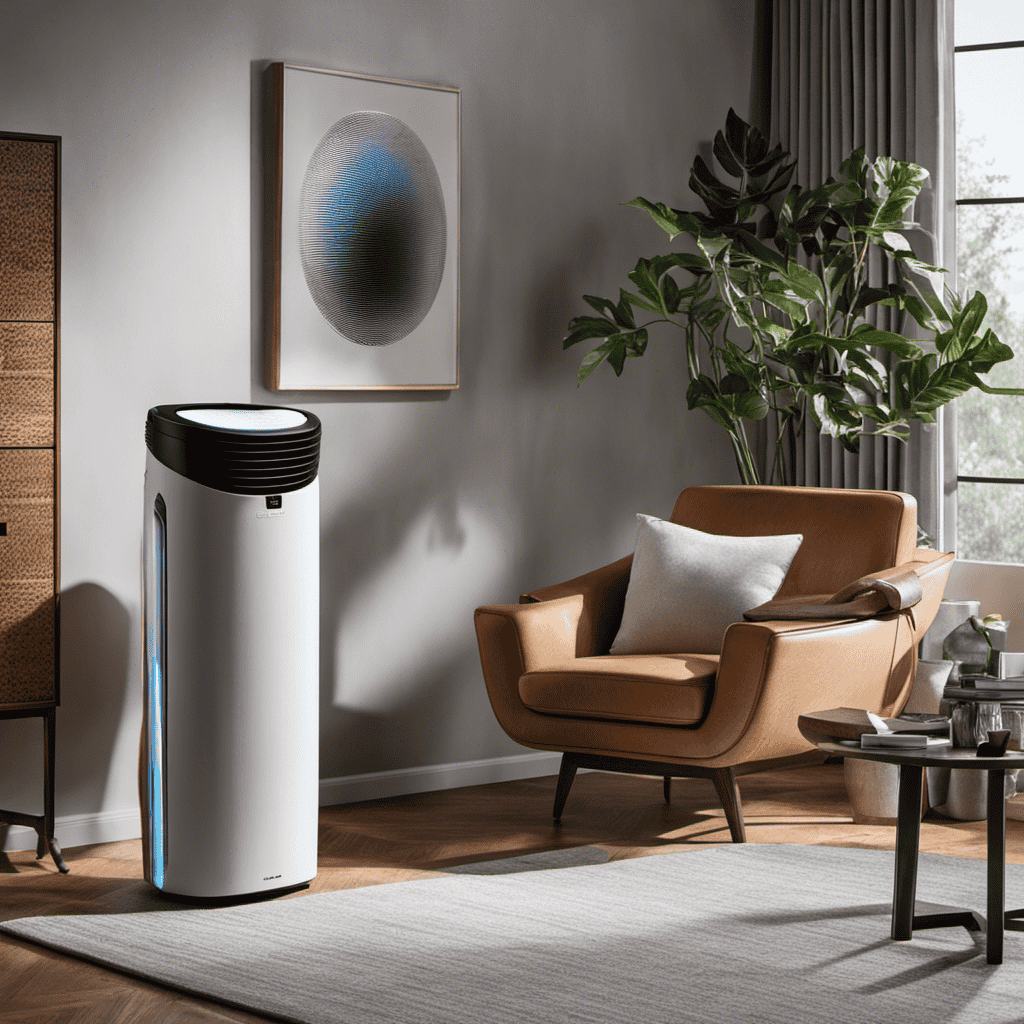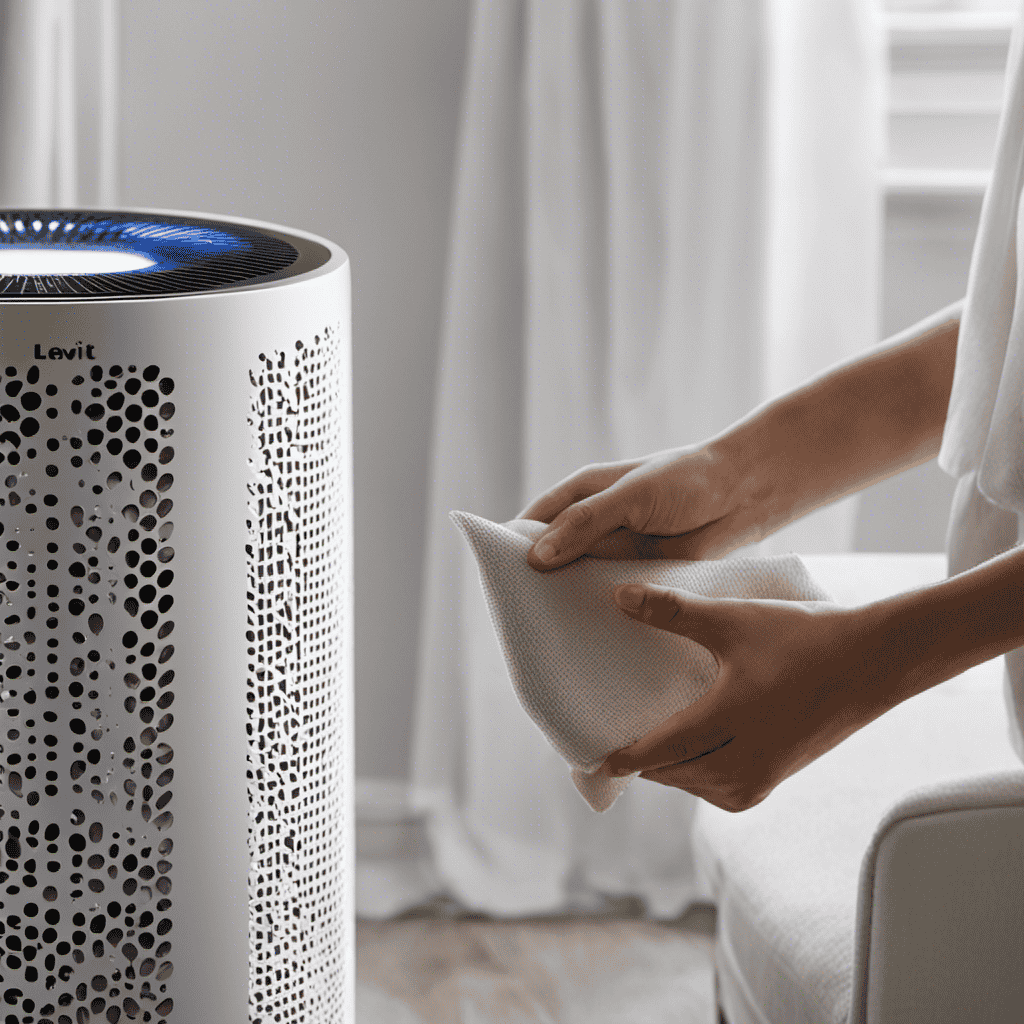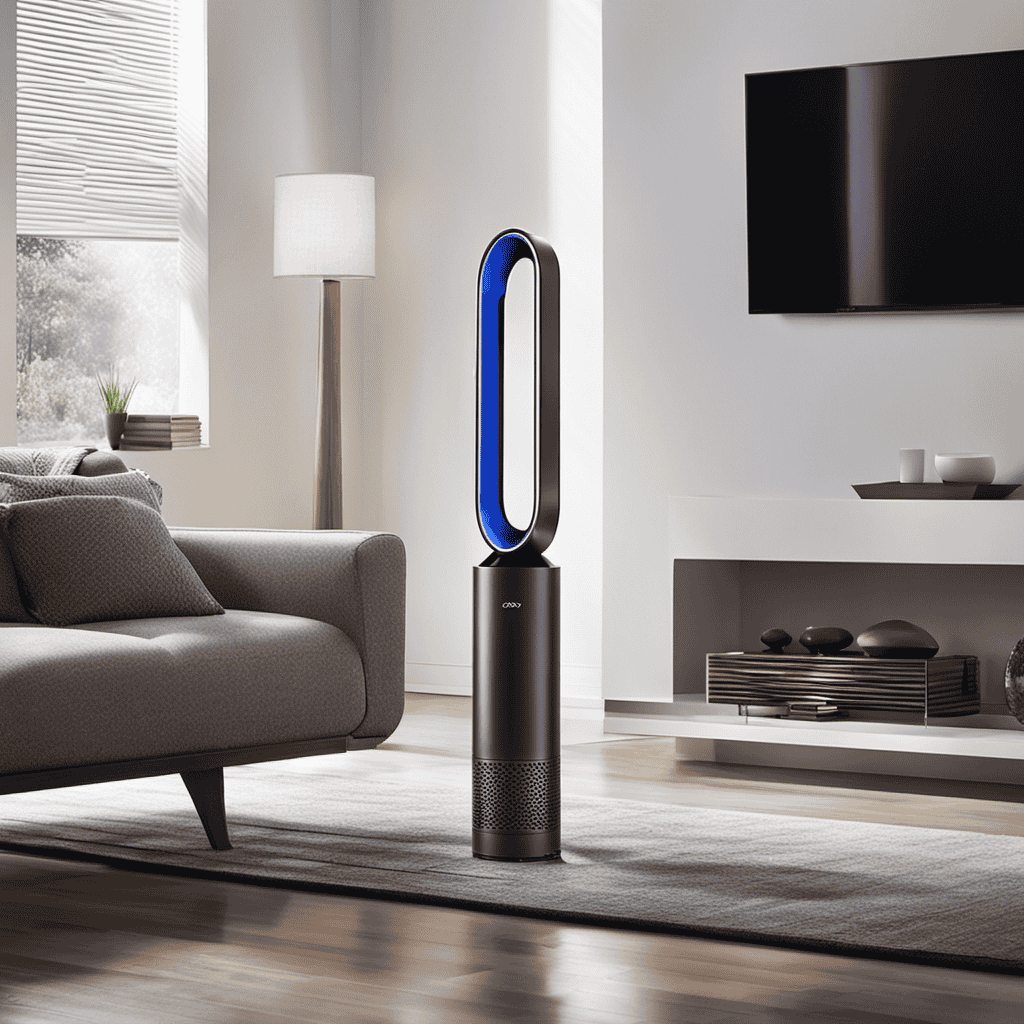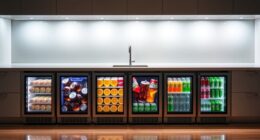Ever thought about how you can manage the airflow direction of your air purifier? Look no further, I’ve got the solution for you!
In this article, I will provide you with all the necessary information and techniques to direct the airflow of your air purifier exactly where you want it.
From understanding the airflow pattern to adjusting ventilation settings and optimizing room layout, I will guide you step by step to ensure efficient air circulation in your space.
So let’s dive in and take control of that refreshing breeze!
Key Takeaways
- Understanding the airflow pattern and positioning of the air purifier is crucial for effective air capture and purification.
- Adjusting ventilation settings, such as fan speed and filter maintenance, improves air circulation and filter efficiency.
- Optimizing room layout by placing the air purifier centrally and away from obstructions enhances overall air circulation.
- Using additional accessories like curtains or air deflectors allows for better control of airflow direction and intensity.
Understanding the Air Purifier’s Airflow Pattern
To understand the airflow pattern of your air purifier, you should look for the direction of the air intake and the direction of the air outlet. The air intake is where the purifier draws in the surrounding air, while the air outlet is where the purified air is released back into the room.
By observing these directions, you can determine how the air is being circulated within the purifier. This knowledge is crucial for several reasons.
Firstly, it helps you identify the correct positioning of the air purifier in your space, ensuring that it is effectively capturing and purifying the air. Additionally, understanding the airflow pattern allows you to predict the direction of the clean air, enabling you to strategically place the purifier in areas where you need it the most.
This is especially important for proper air circulation and to reap the benefits of clean air, such as improved indoor air quality and reduced allergens.
As we delve deeper into adjusting the air purifier’s ventilation settings, it is essential to comprehend the airflow pattern to achieve optimal results.
Adjusting the Air Purifier’s Ventilation Settings
Adjusting the ventilation settings on the purifier can help control the airflow. This is crucial for maintaining the efficiency of your air purifier and ensuring its optimal performance. Regular maintenance is important to keep your air purifier functioning at its best.
Here are three techniques to improve indoor air quality with proper ventilation:
-
Clean or replace filters regularly: Dirty filters can obstruct the airflow and reduce the purifier’s efficiency. By cleaning or replacing them as recommended by the manufacturer, you can ensure that the air purifier is effectively removing pollutants from the air.
-
Position the purifier strategically: Place the air purifier in a central location to help circulate the purified air throughout the room. This will ensure that the entire space receives clean and fresh air.
-
Adjust the fan speed: Some air purifiers allow you to adjust the fan speed. Higher fan speeds can help improve air circulation and filter efficiency, especially in larger rooms or areas with high pollutant levels.
Optimizing Room Layout for Efficient Air Circulation
Placing the air purifier strategically in the room helps ensure efficient circulation of clean air. When it comes to optimizing room layout for efficient air circulation, furniture and window placement play a crucial role.
Firstly, consider the furniture placement. It’s important to position the air purifier away from any obstructions, such as large pieces of furniture, that may hinder the flow of air. Placing the air purifier in an open area allows it to effectively circulate the air in the room.
Secondly, window placement is also important. If possible, position the air purifier near a window. This allows the purifier to draw in fresh outdoor air, which can then be filtered and circulated throughout the room.
Using Additional Accessories to Control Airflow Direction
Consider using additional accessories, such as fans or air deflectors, to control the direction of airflow in your room. Redirecting air flow can help improve the overall air circulation and distribution, ensuring better ventilation and comfort.
Here are three options to consider:
-
Using curtains to redirect air flow: Hang curtains strategically to guide the airflow in a desired direction. By opening or closing them partially, you can control the amount of air entering or leaving a specific area.
-
Creating a DIY air deflector for better air distribution: Craft a simple air deflector using cardboard or plastic sheets. Attach it to the front of your fan or air purifier, angling it upward or downward to direct the airflow towards a particular area or to disperse it evenly throughout the room.
-
Investing in an adjustable air deflector: Consider purchasing an adjustable air deflector that can be attached to your air conditioning vents or fans. These deflectors allow you to control the direction and intensity of the airflow, ensuring optimal air distribution.
Troubleshooting Common Issues With Air Purifier Wind Direction
If you’re having trouble with your air purifier, the first thing you should check is whether it’s receiving enough power. Insufficient power can lead to various issues, including problems with the wind direction. To troubleshoot common issues with air purifier wind direction, here are some tips and tricks to help you out.
One common problem users face is noisy operation. If your air purifier is making excessive noise, it could be due to a dirty fan or a loose component. Cleaning the fan and tightening any loose parts may alleviate the noise problem.
Regular cleaning and maintenance can also prevent wind direction issues. Dust and debris can accumulate on the air purifier’s vents, hindering proper airflow. Refer to the manufacturer’s instructions for specific cleaning guidelines, but generally, using a soft cloth or brush to remove dust from the vents is recommended.
To further troubleshoot wind direction problems, refer to the table below for additional tips and solutions:
| Issue | Possible Cause | Solution |
|---|---|---|
| Wind blowing in the wrong direction | Air purifier placement | Reposition the air purifier away from obstacles or walls |
| Uneven airflow | Clogged filters | Clean or replace the filters as necessary |
| Weak airflow | Motor or fan malfunction | Contact customer support for assistance |
| Intermittent airflow | Power supply issues | Check power cord and outlet connections |
Can Using an Air Purifier Hunter help in Directing the Wind Direction of an Air Purifier?
Yes, using an air purifier hunter can help in directing the wind direction of an air purifier. By strategically placing the air purifier hunter, you can effectively control the flow of the purified air and ensure that it reaches all corners of the room.
Conclusion
In conclusion, mastering the art of directing the wind direction of your air purifier is like taming a wild gust of air. With a deep understanding of the airflow pattern, precise adjustments to the ventilation settings, strategic room layout optimization, and clever use of additional accessories, you can harness the power of clean air in your abode.
So, don’t let the wind blow you away, take control and create an oasis of purity and freshness in your home. Your lungs will thank you, and you’ll breathe easy knowing you’ve conquered the winds of pollution.









